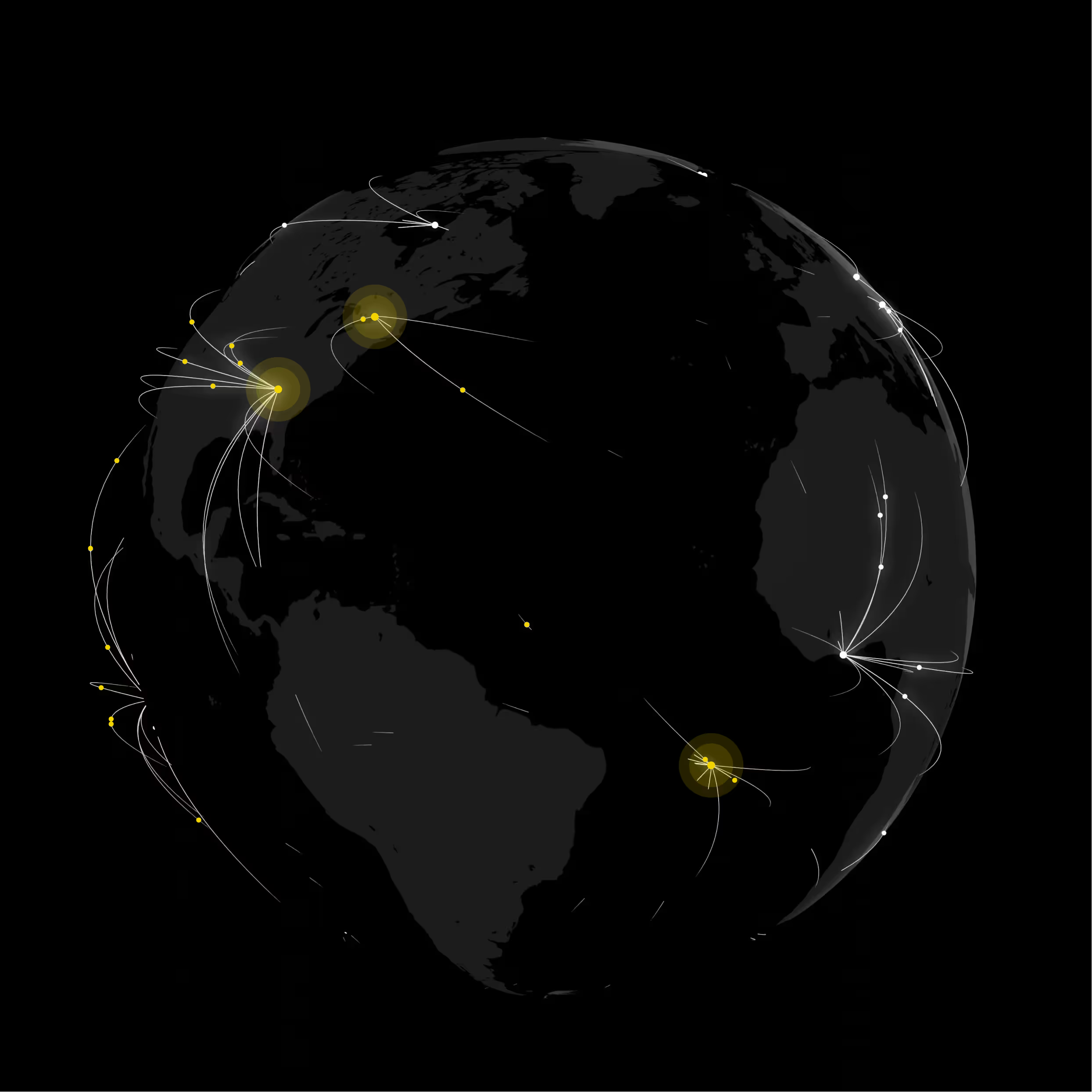Security Assessment: 2024 U.S. Presidential Election
Summary
The 2024 US election season is occurring within an extraordinarily elevated threat landscape, both domestically and internationally. The threat of unrest and potential violence going into this election season was already high, stemming from the contestation of the election results four years ago, culminating with the events on January 6th, 2021. Two recent assassination attempts on former President Donald Trump have heightened tensions.
Domestic tensions are exacerbated by an increasingly volatile environment internationally. The active conflicts in Ukraine and the Middle East both have the potential to expand into wider conflagrations and continue to fuel geopolitical tensions. These conflicts have also strained tensions with Russia, China, and Iran, whose intelligence agencies and state-sponsored hacking groups pose a cybersecurity and online disinformation risk to the elections.
Although caution should be exercised throughout the election season, the three highest-risk days are November 5, 2024 (Election Day), January 6, 2025 (Election Certification Day), and January 20, 2025 (Inauguration Day, and the transfer of power from one president to the next). While the greatest potential for political violence is in Washington DC, the possibility for unrest and violence in locations including US state capital cities and within election “swing states” exists as well.
This report analyzes the critical domestic and international threats during election season and provides recommendations for protecting people, property, and assets.

Introduction
Election day will occur on Tuesday, November 5th, with some states already opening early voting options via mail and in-person voting.
- Official voting information can be accessed here.
- State-by-state rules on early in-person voting can be found here.
- Early in-person voting can avoid crowds, long voting lines, and greater risk, which may be a preferred option for VIPs.
- It’s recommended that any time off provided to employees for voting be extended to cover early voting options as well. Doing so will stagger the number of employees off-site on any given day (this may be safer for employees residing in swing states and other politically contentious districts).
Following Election Day, the US Congress will certify the election results on January 6, 2025. This milestone was the primary source of unrest during the previous Presidential election, as protesters attempted to interfere with the certification process. Readers are encouraged to read Congress’s final report on those events.
Finally, current President Joseph Biden will step down, and the newly elected President will enter office on January 20, 2025.
Risks
Base Operations is tracking three risk categories that can impact safety during this election season:
- Political Violence
- Civil Unrest
- Election Interference
Political Violence
The threat of political violence is extremely high, as we already have had three incidents this year.
Former President Trump was targeted by two assassination attempts. One on July 13th at a political rally in Butler (Pennsylvania) and a second on September 15th at the Trump International Golf Club in West Palm Beach (Florida). On October 12, a man with multiple guns was arrested outside a Trump Rally in Coachella, CA.
- The attempted assassin at the Butler event, Thomas Matthew Crooks, was killed by a US Secret Service countersniper. Crooks does not appear to have been politically motivated, instead looking for notoriety and fame by killing a high-value target.
- The alleged assassin at the Trump International Golf Club, Ryan Wesley Routh, was apprehended by law enforcement after fleeing the scene. Routh’s motivations are still under investigation, but he appears to have had shifting political views throughout his life and subscribes to multiple conspiracy theories.
And while no members of Congress were injured on January 6th, 2021, it appears that some of the participants entered the Capitol with that intent.
Pipe bombs were discovered outside the Republican and Democratic National Committee’s respective offices in Washington, D.C., on January 6. Neither device was triggered, and no one was injured. It’s also not clear whether these devices were even real.1
Threatening activity has also extended to local and state legislators, with 43% of state legislators experiencing threats.2
DHS has designated the presidential election vote certification (January 6th, 2025) as a National Security Special Event (NSSE).3 Congress will receive bolstered security measures for this, coordinated by the US Secret Service (USSS).
Civil Unrest
The U.S. has seen several significant civil unrest events occur recently due to major political and social issues, in addition to the events on January 6, 2021.
- Violent protests erupted in Minneapolis, Seattle, Portland, and elsewhere in the Spring of 2020 following the death of George Floyd, resulting in multiple deaths and hundreds of millions of dollars in property damage.
- Increased protests, some violent, in cities and on college campuses related to the conflict between Israel and Hamas beginning on October 7, 2023.
Election Interference
The current polls show that this election is likely to be very close, and political actors may be motivated to act to influence the outcome towards their preferred candidate. Some actors may be influenced by former President Trump’s allegations that there were election improprieties. Election interference includes the following:
- Voter Purges: Purges are attempts to remove voters from registration rolls by challenging their authenticity or eligibility to vote. There are already reports of individuals and groups employing large-scale efforts to purge voters from the voter rolls, including more than 1 Million voters in Texas.4
- Voter Suppression: Efforts to prevent voters from voting through intimidation (both in-person and online), physical obstacles, and more.
- Ballot Interference: Physically manipulating ballots or voting infrastructure to suppress or change votes. Interference can also include threatening or harassing election workers and officials.
Extremist groups and lone actors may engage in acts of intimidation such as doxing, swatting, hoax bomb threats, and the mailing of suspicious packages. These acts can disrupt operations, cause emotional distress, and distract or overwhelm law enforcement personnel and Chemical, Biological, Radiation, Nuclear, and High-Yield Explosives (or CBRNE) specialists. Swatting activities have resulted in the loss of life, either through the unwitting actions of law enforcement5 or even heart attacks from the shock of officers suddenly breaching a home.6
Election workers and officials are facing undue pressure and levels of risk. A recent survey conducted by the Brennan Center for Justice found that “38 percent of local election officials experienced threats, harassment, or abuse for doing their jobs.”7 During one week in September of this year, 20 election officials were targeted with suspicious packages.8 One facility in Fulton County, Georgia, even received an envelope laced with fentanyl.9 This has prompted some election workers to wear gloves when handling all packages.
Although caution should be exercised throughout the election season, result certification process, and inauguration ceremony, Election Day will likely have the highest level of risk as officials have limited resources to protect numerous polling locations across diverse threat environments. Election workers and officials have been experiencing increased rates of harassment and intimidation, such as being sent suspicious packages. This has prompted security measures, such as panic buttons and bullet-resistant glass. Election officials have also taken measures to mitigate the risk of insider threats from tampering with election infrastructure.
Voters themselves face an array of risks. Hostile public rhetoric, misinformation, and disinformation are poised to catalyze confrontations at election sites and motivate extremist groups (e.g., the Patriot Front). This is especially true for communities of color, who have historically faced issues of voter suppression and intimidation.
At-Risk Communities
Readers are advised that the rhetoric around the elections and major political issues will likely catalyze and incite violence against minority communities. As political messaging increases closer to Election Day, social and policy issues touching upon these communities will continuously be at the forefront of news and social media. As part of this, derogatory rhetoric and misinformation about certain groups will likely be perpetuated in torrential volumes as well.
Jewish and Muslim Communities: Since October 7th, threats, harassment, and violence against both Jewish and Muslim communities have spiked across the US.10 With the recent anniversary of the 10/7/23 terrorist attack and escalating tensions in the Middle East, these elevated rates of violence are likely to persist and possibly become amplified as candidates discuss their views on the conflict.
- A preliminary report by the Anti-Defamation League has found that there have been over 10,000 reported incidents of antisemitism in the US since 10/7/23.11
- Arab American voters in Michigan and Georgia may play a key role in deciding the election as they have begun breaking away from the Democratic Party due to the Biden-Harris administration's position on the conflict in the Middle East.12
LGBTQIA+ Community: LGBTQIA+ rights have become a focal point of hostile political and public rhetoric from the local to national level. This includes the spreading of disinformation, misinformation, and harmful conspiracy theories.
- Trans, Non-Binary, and Gender Non-Conforming communities, in particular, have become the target of a number of bills to limit access to gender-affirming services and legal recognition. Members of these communities should consult this report by Williams Institute (UCLA) on how identification laws and recent legislation can create voting obstacles.
- During 2023, DHS has observed a rise in anti-LGBTQIA+ threats and harassment.13 Libraries supporting Pride events and Drag shows, in particular, faced the brunt of these activities.
- Between 2023 and 2023, the FBI found an 8.6% rise in gender identity and sexual orientation-motivated hate crimes.14
Communities of Color: Communities of color in the Southern US have historically faced issues of voter intimidation and suppression. Because these communities often play a key role in swing states, they may be at increased risk of violence from lone actors and organized Racially and Ethnically Motivated Extremists (REMEs) groups.
- The Southern Poverty Law Center has a resource page related to Voting Rights, as well as a fact sheet on how to respond to voter intimidation.
Immigrant Communities: Following former President Trump’s claims that Haitian immigrants in Springfield (Ohio) were eating residents’ pets, the city experienced a series of bomb threats that forced public events to be canceled and students to attend school under the protection of state troopers.15 These claims were amplified by neo-Nazi groups, as well a number of politicians (including Trump’s running mate JD Vance). The FBI’s Springfield Field Office issued a press release to remind the public that bomb threats are federal crimes that will be pursued by the Bureau.16
- In addition to this, former President Trump also stated that members of the transnational crime organization Tren de Aragua were taking over Aurora (Colorado).17 These comments have the potential to spark similar intimidation activities, like those in Springfield.
- Former President Trump has continuously alleged that migrants are illegally voting for the Democratic Party in large numbers.18 However, a number of studies from across the political spectrum have found that noncitizen voting is extremely rare. Trump’s continuous messaging of this claim, however, may place specific ethnic communities at risk for bias crime or voter intimidation (e.g., questioning if a US citizen of Latin heritage is eligible to vote while the person is waiting in line).
- In the leadup to the January 6th attacks on the US Capitol, former President Trump also repeated multiple claims about voter fraud and the theft of the election.19 If his repeated messaging about migrants continues to resonate with his supporters, there is legitimate concern that they may take physical action.
At-Risk Locations
In addition to the discussed communities, a number of locations are at an elevated risk for unrest and violence. These include sites of major political significance, as well as towns and cities within swing states with election infrastructure or where voting results could have a major electoral impact.
Swing states (also known as battleground states) for the 2024 election include:20
- Arizona
- Georgia
- Michigan
- Nevada
- North Carolina
- Pennsylvania
- Wisconsin
Florida has historically been viewed as a battleground state. However, in recent years it has become increasingly right-leaning. During the 2020 presidential election, Texas became surprisingly close to flipping from a red state to a blue one. Although there will be a great deal of national attention paid to the seven states listed above, readers should also be aware that there may be an increased risk of confrontations in Texas and Florida as well.
Below is an analysis of potential unrest locations across several major cities. Even cities outside of politically contested areas face an increased threat of unrest if their residents become dissatisfied with the election outcome or extremist groups are catalyzed to take action as election-related events unfold. Understanding where historical unrest has occurred can help pinpoint future assembly areas and sites of significance. The analysis showcases Base Operations' street-level intelligence, including the breadth and depth of its coverage of threats outside of crime incidents.
Washington, D.C.

- 183 events were peaceful, whereas 16 required intervention.
- Outside of the White House, unrest events largely center around the US Capitol on the eastern edge of the National Mall.
- Readers are advised to avoid Union Station on Election Day and January 6th as it is in close proximity to the US Capitol.
- After the January 6th attacks, the US Capitol Police established a robust intelligence bureau.21 This has better situated the Capitol Police to proactively gather intelligence on an array of threats rather than relying on other agencies. This, combined with the designation of 1/6/25 as a NSSE, should ensure that the capital region is protected throughout the election season.
Philadelphia, PA

Events largely center around the City Hall and immediate streets. Other areas with significant activity include the University of Pennsylvania and Independence Hall. Readers should also be aware that the Benjamin Franklin Bridge could also be intentionally blocked by actors as part of a demonstration.
Boston, MA

Unrest activity in Boston is largely concentrated in the north side of the City, particularly around Dock Square and Boston Common. The Dock Square district is home to Boston City Hall, Quincy Market, and the Old State House. There are also clusters of activity in the western districts of Boston around Boston College and Northeastern University. Readers are advised that there has been a great deal of student protest activity in neighboring Cambridge, which is home to Harvard University and Massachusetts Institute of Technology (MIT). These protests have largely centered around the Israel-Hamas war.
Within a 0.4 mile radius around Boston City Hall, there have been 213 unrest events between 1/1/23 and 9/30/24. 91.5% of these events have been peaceful, with the remainder requiring intervention or involving criminality. In September 2024, there was an uptick in activity related to union advocacy, demonstrations by the environmental group Extinction Rebellion, and rallies in support of migrants and refugees after former President Trump’s comments regarding Springfield, Ohio.

Atlanta, GA

Readers are cautioned that Atlanta has experienced high degrees of unrest around the construction of a police training facility (aka the Atlanta Public Safety Training facility or “Cop City”).22 Critics of the facility have seen its construction as a misappropriation of funds and culturally significant land. The city saw a lethal shootout between law enforcement and armed protestors, as well as required the presence of National Guard personnel. Readers are advised to avoid the construction site (South River Forest in DeKalb County) and that anti-law enforcement sentiment may still be elevated. It may be prudent to avoid wearing any security or law enforcement paraphernalia, in the vicinity of the construction site or common protest areas, outside of official duties. Although the “Cop City” protests and Election Day are not directly related, the heavy political messaging for local candidates around Election Day may reignite a number of contentious political issues.
Raleigh, NC

Activity is largely clustered around the Capitol Building itself, as well as the North Carolina Museum of Natural Sciences and North Carolina Legislative Building directly north of the Capitol. Because of North Carolina’s status as a swing state and the politicization of Hurricane Helene, readers are advised to avoid this area on Election Day.
Minneapolis, MN

Readers are advised that unrest activity in the city is diffuse. Outside of City Hall, readers are advised to avoid the Hennepin County Government Center directly south of City Hall and the Commons (an urban park and cultural hub directly east of City Hall).
Madison, WI

Readers are cautioned that the State Capitol building is situated on a narrow strip of land between Lake Monona and Lake Mendota. This makes the area a natural chokepoint that protestors or threat actors could use to their advantage by blocking the limited road access in the area.
Lansing, MI

Readers are cautioned that the FBI arrested 13 individuals in October of 2020 for planning to kidnap Governor Gretchen Whitmer. Several of the arrestees were members of a local militia group (the Wolverine Watchmen). Militia groups have had a noted presence within Michigan state, with a number of high profile arrests and court cases tied to them.23 Organizations with personnel and assets in Michigan are advised that local militia groups may pose a significant threat on Election Day. Militia groups often have anti-government ideologies or view themselves as legitimate enforcers of the US Constitution. Multiple militia groups, for example, were present during the January 6th attack.24
Seattle, WA


Readers are advised that even though the Capitol Hill area does not have as many clusters of unrest activity as University District and southwest waterfront districts, the area played a significant role during the 2020 civil unrest that followed the killing of George Floyd. Protestors occupied a multi-block area of Capitol Hill between 6/8/20 and 7/1/20, declaring it a police-free autonomous zone. Seattle is known for its political activism and readers are cautioned that there will likely be a number of demonstrations on Election Day that may create travel delays or road blockages. It may be advantageous to vote as early as possible and return home before the election results begin to be called.
San Francisco, CA

Readers are advised that pro-Palestinian protestors have blocked traffic on the Golden Gate and Oakland Bridges for several hours on multiple occasions.25 These bridges should be avoided on Election Day as there is an elevated risk that protestors may repeat these activities due to their dissatisfaction with the US government and candidates supporting Israel.
In addition to this guidance, readers are cautioned to avoid the San Francisco Federal Building (directly east of San Francisco City Hall and the UN Plaza) and the Mission District neighborhood. These locations have experienced large demonstrations regarding the Israeli-Hamas war between late September and Early October of this year. Although these protests have been overwhelmingly peaceful, heightened political tensions and rhetoric on Election Day could agitate protestors.
Phoenix, AZ

Outside of the city hall, readers are cautioned that unrest can cluster around the Arizona State Capitol Building (approximately 1.3 miles directly west of the Phoenix City Hall). Both locations should be avoided on Election Day due to the increased risk of demonstration activity.
Carson City, NV

Readers are advised that Nevada recently expanded eligibility for online voting and is attempting to expand it further to assist Native American communities.26 These communities have historically faced challenges when attempting to vote; namely, limited access to voter education and disproportionately long travel times to polling locations. Although the state is confident in its election security measures, the expanded use of electronic voting in a swing state will likely catalyze misinformation and conspiracy theories.
Environmental Risk
This election season has already been affected by two major hurricanes impacting the southeastern states, and potentially impacting election infrastructure and voters' ability to cast their ballots.
- In late September, Hurricane Helene killed more than 230 people and damaged critical infrastructure.
- Hurricane Milton has severely impacted central Florida, with multiple reported deaths.27 At the time of reporting, the situation is still pending, but it is likely that critical infrastructure has been impacted by this storm as well.
- Although the Federal Emergency Management Agency (FEMA) has stated that it has enough funds to effectively respond to this hurricane season, the aftermath of Helene has already generated misinformation and divisive political rhetoric.28 Despite some Republican officials praising the current hurricane relief efforts, there have been claims from the far-right that FEMA has no money to act due to funds being appropriated for migrant relief and Ukrainian/Israeli military support.
- FEMA officials have also received violent threats on social media due to rumors that the agency is withholding or seizing aid, with one highly-viewed post encouraging local militias to resist the disaster relief agency.29
- This misinformation has prompted FEMA to establish a Hurricane Rumor Response page.
Officials have expressed concerns that the destruction and displacement of persons could impact voting in both Georgia and North Carolina (two key swing states).
- Karen Brinson Bell, Executive Director of the North Carolina State Board of Elections stated that "There may be polling places impacted by mudslides, there may be polling places inaccessible because of damaged roads, and there may be polling places with trees that have fallen on them."30
- In response to these conditions, North Carolina officials may relax requirements as to where mail ballots can be dropped off and required identification.31
- Regardless of the degree to which election facilities and infrastructure are fully restored, misinformation and conspiracy theories will likely persist.
Readers are advised that, even with federal assistance, relief efforts will strain local first responder resources and provide opportunities for threat actors to take advantage of service disruptions and damaged security infrastructure (e.g., damaged fences and evacuated guard posts). Although the well-being of personnel is the foremost concern, organizations with assets in affected regions should secure them as quickly as it is safely possible to do so.
Threats
Domestic Threats
A leaked DHS report from earlier this month states that Domestic Violent Extremists (DVEs) “will pose the most significant physical threat to government officials, voters, and elections-related personnel and infrastructure, including polling places, ballot drop box locations, voter registration sites, campaign events, political party offices, and vote counting sites.”32 The DHS and FBI are especially concerned that DVEs with election-related grievances (i.e., angered by or unwilling to accept former President Trump’s loss to President Joe Biden in 2020) will become violent closer to Election Day.33 However, a specific and credible threat has not been identified.
Groups of particular interest are the Proud Boys, Oathkeepers, Patriot Front, and Three Percenters, all of which were tied to the January 6th Capitol attack. There have been conflicting reports about the strength of the Proud Boys after the January 6th Capital attack.34 A recent report from ACLED35 indicates that the number of events attended or organized by the Proud Boys has significantly decreased, despite a surge in their activity during 2022.36 ACLED concedes, though, that the group may be taking a more uncharacteristically clandestine approach. A special report by Reuters, however, indicates that the Proud Boys are prepared to act as “foot soldiers” for former President Trump, have been rebuilding, and even expanded the group internationally.37 It should be noted that Canada and New Zealand designate the Proud Boys as a terrorist group.
The Oathkeepers and Three Percenters show signs of major decay. Although the groups remain potential threat actors, it’s important to note that they largely disbanded following the January 6th attack, making few public appearances since the failed insurrection.38 The Patriot Front, however, has maintained a consistent presence from 2022 to the present, with chapters and public appearances across the US. Of the four discussed groups, it appears to have a very limited presence during January 6th. This likely made it a lower priority for law enforcement inquiries, allowing its leadership and structure to persist.


Readers who have a specific interest in domestic extremist groups with a nexus to the election are encouraged to read the final report of the Congressional Investigation into the January 6th attack on the Capitol.
Nation-State Actors
Russia's invasion of Ukraine, conflict in the Middle East, and the US elections bringing domestic political and social tensions to the fore provide America’s adversaries with numerous opportunities to undermine US influence and sow discord. A recent DHS report states that “China, Iran, and Russia will use a blend of subversive, undeclared, criminal, and coercive tactics to seek new opportunities to undermine confidence in US democratic institutions and domestic social cohesion.”
Recent Nation State activities include:
On October 3rd, the Department of Justice announced that it had seized 41 internet domains utilized by Russian intelligence officials to conduct spear phishing campaigns and steal personal information.40
In September, three members of the Islamic Revolution Guard Corps (IRGC) were indicted for a hack-and-leak attack on Trump campaign staffers. The attack was intended to influence the election by disseminating potentially damaging or sensitive information.41
- The IRGC is a multifunctional arm of the Iranian military. Unlike a conventional military capacity, it also holds enormous sway over Iran’s economy, politics, and society. It also conducts cyber operations and fosters relationships with extremist groups across the Middle East.
- The IRGC is designated as a terrorist organization by the US.
- For more information on the organization, please refer to this brief by the Council on Foreign Relations.
In late September, federal officials reported that Russian agents allegedly funneled money through shell companies to pay social media influences to discuss political issues leading up to the election.42
- At least 10 million dollars was funded through a company based in Tennessee.
- The right-leaning influencers appear to have been completely unaware that the agents were acting on behalf of Russia.
On September 4th, the State Department announced multiple measures to counter Russian influence. This includes visa restrictions, designating several Russian news sites as foreign missions under the control of the Russian government, and establishing a Rewards for Justice fund for information on Russian influence activists and certain hacking groups.43
In July, a Pakistani national was also arrested in NYC for allegedly organizing an assassination attempt on former President Trump on behalf of the IRGC. Although this plot was foiled, former President Trump was recently briefed in late September on continued Iranian threats to his life.44
Throughout 2023 and early 2024, there was an international crackdown on Chinese “overseas police stations” across the US, Canada, Japan, and Western Europe.
- Between 2016 and 2022, provincial Chinese authorities set up at least 102 of covert “police stations” in at least 52 countries.45
- Although some functions of these stations were benign, such as administrative tasks, others appear to be intelligence, counterintelligence, and intimidation-related. Deployed agents were well situated to harass members of the Chinese diaspora, silence critics of China, and recruit spies.
- Despite the existence of these nations being brought to light and a crackdown by the the DOJ/FBI, the ability of China to field such a physically effective presence abroad is a strong indication of its espionage capabilities.46
CISA and the FBI have released joint guidance for members of political organizations on how to mitigate Iranian cyber threats, which can be accessed here. Although issued to a specific audience, much of the guidance is transferable to other organizations.
Conflict in the Middle East and Foreign Terrorist Organizations (FTOs)
Middle East
Parallel to this threat assessment, Base Operations has published a situational assessment on the conflict in the Middle East, with particular emphasis on Israeli operations to dismantle Hezbollah and other terrorist organizations based in Lebanon, Gaza, and Yemen (e.g., Hamas and the Houthis). The report can be accessed here. Although the conflict is not directly related to Election Day, it’s important to note that US support for Israel and its counterterrorism operations in the region can serve as a catalyst and ideological motivation for terrorist organizations in addition to current domestic protests and civil unrest.
ISIS
Throughout 2024, ISIS47 (the Islamic State of Iraq and Syria) has resurfaced as a prominent threat to the international community. After the Taliban’s retaking of power in Afghanistan, Western intelligence agencies and militaries have had limited efficacy in countering and infiltrating terrorist groups in the area. Because of this, the Khorosan branch of ISIS ( aka ISIS-K) established a stronghold in the eastern part of the country along the border of Pakistan. It is quickly becoming one of the most feared and effective branches of the terrorist network. Perhaps most notably, it committed an attack on the Crocus City Hall in Moscow (Russia) in March 2024 that killed over 130 people.
Readers are encouraged to read previous Base Operations threat assessments for additional information on ISIS activity earlier in 2024. These assessments are linked below:
- Safe Celebrations: Pride 2024
- Safe Celebrations: 2024 Paris Olympics and Paralympics
- Security Assessment: 2024 Republican & Democrat National Conventions
- Security Assessment: 2024 United Nations General Assembly
Recent ISIS-related events include:
September 4, 2024: A Pakistani national residing in Canada was arrested for allegedly plotting a mass casualty attack on the Jewish center in Brooklyn. The subject allegedly planned to conduct the attack in the name of ISIS on October 7th or October 11th (Yom Kippur).49
September 29, 2024: It was reported that US airstrikes in Syria killed 37 affiliates of ISIS and al-Qaeda.50 Among the eliminated terrorists were two senior leaders; however, their names have not been disclosed.
October 4, 2024: It was reported that the IDF freed a Yazidi woman in Gaza who had been kidnapped by ISIS in northern Iraq in August 2014.51
October 6, 2024: Tajikistani nationals arrested in the US with alleged ties to ISIS were being deported back to Tajikistan.52 The subjects were arrested in late June, 2024. Deporting the suspects, rather than pursuing a lengthy trial, was seen as a resource-saving move by the Department of Justice.
October 8, 2024: An Afghan national living within the US was arrested in Oklahoma for allegedly plotting an Election Day attack on behalf of ISIS.53
- After an initial interview with law enforcement, the subject confirmed: “confirmed that the attack was intended to target large gatherings and that he was expected to die a martyr along with a juvenile co-conspirator, described as an Afghan citizen with legal permanent resident status.”49
- The subject’s internet history indicates that he was trying to purchase firearms without a permit and also access cameras within Washington, DC.
- Readers are advised that many major cities make traffic camera feeds available to the public. This can be a security concern as numerous cameras are placed at critical intersections.
Al-Qaeda
Similarly to ISIS, al-Qaeda (AQ) has benefited from waning Western intelligence capabilities and influence in Afghanistan (as well as Africa). The terrorist organization has experienced a resurgence and is viewed as a growing threat. The chief of MI5, the United Kingdom’s domestic security and counter-intelligence service, has stated that AQ is targeting Europe once again and capitalizing on the conflict in the Middle East to gain support and amplify calls for violence.54
In late September, AQ launched an attack on an airport in Mali, setting fire to the President’s airplane and a number of UN Humanitarian Air Service planes.55 The terrorist group also recently attacked a paramilitary police training center in Faladié.
In August, AQ massacred at least 600 civilians in Burkina Faso that had been ordered by their government to build fortifications around their village of Barsalogho.56
- A French official stated to CNN that in Burkina Faso “armed-terrorist groups are enjoying increasing freedom of action because security forces are unable to cope.”57
The US military has recognized the threat of AQ and related groups gaining strength in Africa. After being evicted from Niger, the US is now establishing bases in Western Africa to station special forces.58
Readers are advised that AQ may be emboldened by recent successes and motivated US support for Israel to commit attacks during Election Day.
Election Security
The FBI helps investigate election crimes and voter suppression, as well as helps bolster election security. Information on the FBI’s role in the 2024 election and protecting voter rights can be found here. The FBI is also part of the multi-agency Election Threats Task Force under the Department of Justice (DOJ)
Election Infrastructure (Physical) Security:
Some examples of election infrastructure include, but are not limited to, the following:59
- Voter registration databases
- IT infrastructure and systems used to manage elections (including those to certify results after the election)
- Physical voting systems and associated infrastructure
- Storage facilities for election and voting system infrastructure
- Polling places (including early voting facilities)
A number of election sites, especially those in swing states, have been fitted with additional surveillance systems, access controls, and bullet-resistant glass.
Some high-risk sites have also installed panic buttons or established emergency procedures to alert officials.
The strengthening of sites, however, has been a patchwork, site-by-site process. According to analysis by the Brennan Center, congressional allotments for the 2024 elections are approximately 1 billion dollars shorter than the preparations made in the years leading up to the 2020 elections.60 This underfunding may create opportunities for threat actors and shortfalls in physical security measures.
AI and Cybersecurity
Outside of physical security, cybersecurity has become a topic of concern for the 2024 election. Readers are advised that instances of voter fraud and tampering are extraordinarily rare. Voting machines are regularly scanned for vulnerabilities and local officials are assisted by CISA. Jen Easterly, Director of CISA61, recently stated: “Malicious actors, even if they tried, could not have an impact at scale such that there would be a material effect on the outcome of the election.”62 What officials are largely concerned about is foreign actors influencing voters with propaganda and misinformation.
Insider threats are a legitimate concern, but there are a number of best-practices for mitigating the risk they pose and identifying suspicious activities. These include physical and digital access controls/logging, a “buddy” system for individuals entering sensitive areas, and robust chain of custody practices.
The democratization of Artificial Intelligence (AI) models and services has created opportunities for threat actors to quickly generate propaganda and convincing imagery that could be used to defame candidates or spread panic. Thankfully, there are a number of ways to detect the use of AI to generate text and imagery. Below are some helpful articles on the topic:
- Tips for spotting AI-generated election disinformation and propaganda | Southern Poverty Law Center
- Disrupting deceptive uses of AI by covert influence operations | OpenAI
- AI and the spread of fake news sites: Experts explain how to counteract them
- 5 Easy Ways To Tell If An Image Is AI Generated
The Cybersecurity and Infrastructure Security Agency (CISA), part of the Department of Homeland Security (DHS), is one of the key agencies responsible for protecting the 2024 elections
- CISA has a web page dedicated to election security here. It’s highly recommended to check the page regularly and sign up for notifications regarding security guidance and election related news.
- CISA is the US’s lead agency for cybersecurity coordination, collection, and strengthening. Any cybersecurity related incidents can be reported to the agency here.
- CISA has also published a webpage to help tackle election related misinformation and rumors that can be accessed here. This is a useful resource to reference as part of any disinformation efforts.
- The Federal Bureau of Investigation (FBI) also plays a pivotal role in the nation’s cybersecurity. However, it focuses more heavily on criminal investigations, intelligence/counterintelligence, and counterterrorism.
- The Bureau runs the Internet Crime Complaint Center, which can be accessed through this link. Additional information on the FBI’s cybersecurity related duties can be found here.
Recommendations for Corporate Security Teams
Although the 2024 elections will take place in a multifaceted and complex environment, public safety, security, and intelligence professionals are aware of the risks and working tirelessly to ensure that every voter can exercise their rights. Nevertheless, there are a number of steps that can be taken to improve situational awareness and help ensure personal/organizational security during the election season. Readers are advised to:
- Sign up for local alerts and download public safety applications, such as AlertNYC, to receive official updates on events such as sudden road closures or protest activity.
- Research your voting rights and responsibilities before Election Day to help address misinformation or voter intimidation attempts that you may encounter while voting.
- Consider finding an official “cheat sheet” of voter rights or creating one from official sources.
- Store the number of civil rights organizations or government watchdog agencies in case you need to report any instances of voter intimidation or suppression.
- Organizations should conduct Open Source Intelligence (OSINT) on mainstream and alt-tech social media sites (e.g., Truth Social, Parler, Gettr, and Gab). Doing so may help uncover derogatory remarks and conspiracy theories that can be addressed through messaging. Additionally, it may identify specific threats and threat actors that should be flagged to security personnel.
- Be wary of attempts to sow discord and panic by threat actors through AI generated imagery. Always cross reference official government sources and established news outlets to verify the authenticity of an alert or event.
- Insecure personal devices and cybersecurity hygiene can endanger workplace systems.
- Secure your personal devices by implementing multi-factor authentication, updating operating systems and applications, and using unique passwords for every service.
- Avoid accessing personal accounts on workplace devices and networks.
- Consider purchasing a Virtual Private Network (VPN) subscription to help mask and encrypt your online traffic.
Readers are advised to take special precautions if they or organizational assets/facilities are in proximity to any election infrastructure. This suggestion applies not only during the election season but also after while votes are being certified and formalized. Some measures include:
- Providing employees with brief training on cybersecurity and identifying suspicious activity.
- Establishing lines of contact with officials to better share intelligence and safety concerns.
- Allocating additional work hours to bolster both physical security and cybersecurity operations centers.
- It may also be prudent to allocate resources to patching, upgrading, and assessing IT systems.
- As part of these efforts, it’s recommended to replace any damaged or unreliable surveillance/sensor systems.
- It is not recommended to hire temporary personnel without significant vetting as those wishing to act as insider threats or position themselves close to election infrastructure may specifically seek out such positions.
- Hardening soft targets and pedestrian walkways/plazas with temporary fencing and anti-vehicle barriers.
- Information on securing public gatherings, provided by the Cybersecurity and Infrastructure Security Agency, can be found here.
Footnotes
2: https://www.brennancenter.org
7: https://www.brennancenter.org
9: Ibid.
17: https://www.theguardian.com
19: Chapter 1, Section 8 (www.govinfo.gov)
31: Ibid.
35: Armed Conflict Location and Event Data
47: Please note, ISIS is also commonly referred to as IS (Islamic State) and ISIL (Islamic State of Iraq and the Levant).
50: https://www.timesofisrael.com
57: Ibid.
60: https://www.brennancenter.org
Takeaways

Join 1100+ security leaders getting new ideas on how to better protect their people and assets.










